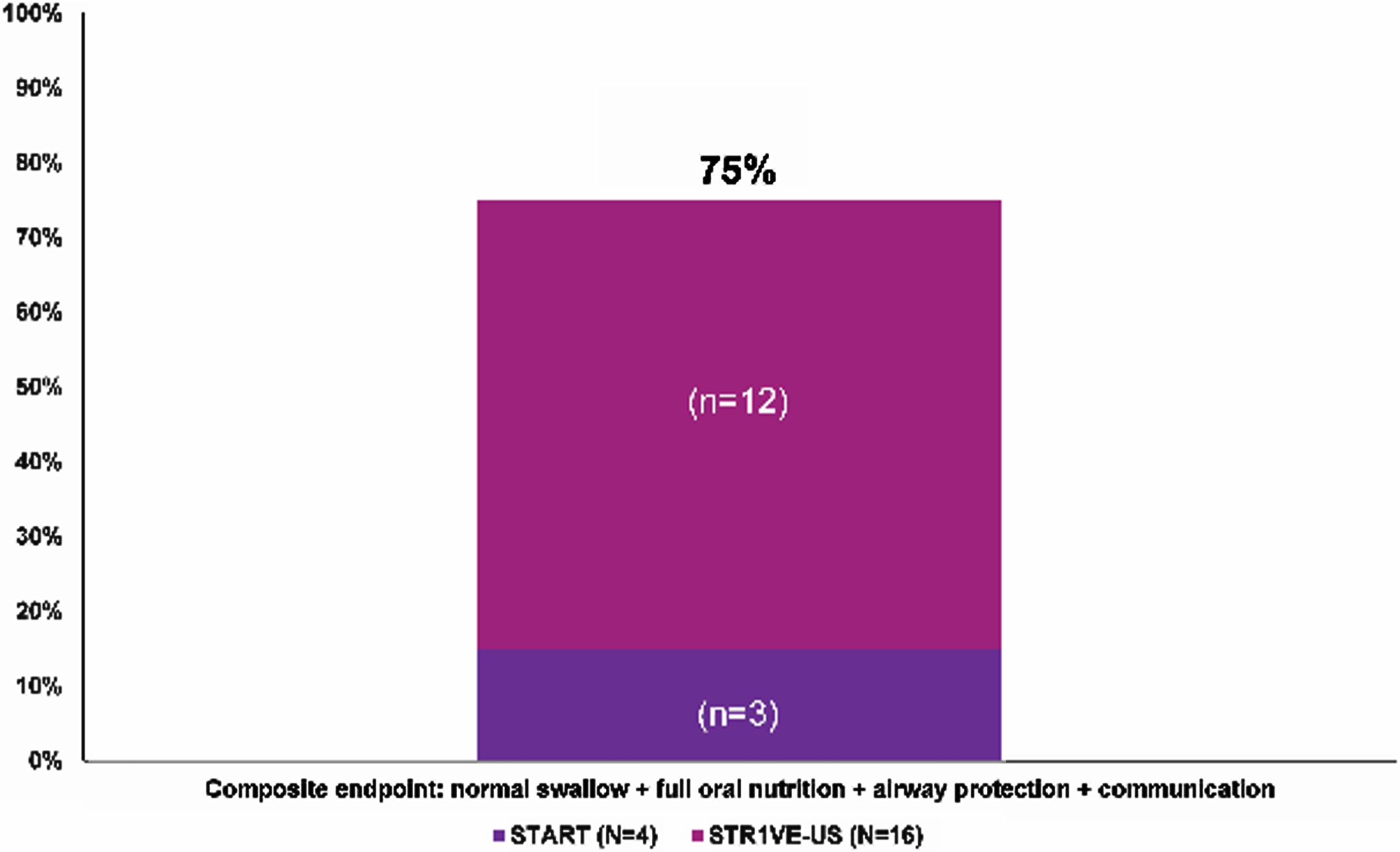Erratum to: Patients with Spinal Muscular Atrophy Type 1 Achieve and Maintain Bulbar Function Following Onasemnogene Abeparvovec Treatment
[Journal of Neuromuscular Diseases 10(4), 2023, 531–540, 10.3233/JND-221531]
https://content.iospress.com/articles/journal-of-neuromuscular-diseases/jnd221531
On page 536, for Figure 2, the figure legend was incorrect from line 5 onwards. The inaccurate text is:
At baseline, communication was assessed for 20 native-English speaking patients in STR1VE-US who had a CHOP INTEND score of 60 or greater; communication was assessed before end of study for four patients in START and 16 in STR1VE-US.
This text should be replaced with:
Communication was assessed for patients from native English-speaking families in START and STR1VE-US. In addition, communication was only assessed for patients in START who achieved a CHOP INTEND score≥60. At baseline, communication was assessed for 20 patients in STR1VE-US; communication was assessed before end of study for four patients in START and 16 in STR1VE-US.
The Figure 2 including the complete and correct legend is included below:
Fig. 2
Percentage of patients meeting the composite endpointa representing bulbar function. aPercentages were calculated as a portion of patients with available data (N = 65 for swallow, nutrition, and airway protection; N = 20 for communication; N = 20 for composite endpoint). Communication was assessed for patients from native English-speaking families in START and STR1VE-US. In addition, communication was only assessed for patients in START who achieved a CHOP INTEND score ≥60. At baseline, communication was assessed for 20 patients in STR1VE-US; communication was assessed before end of study for four patients in START and 16 in STR1VE-US.





